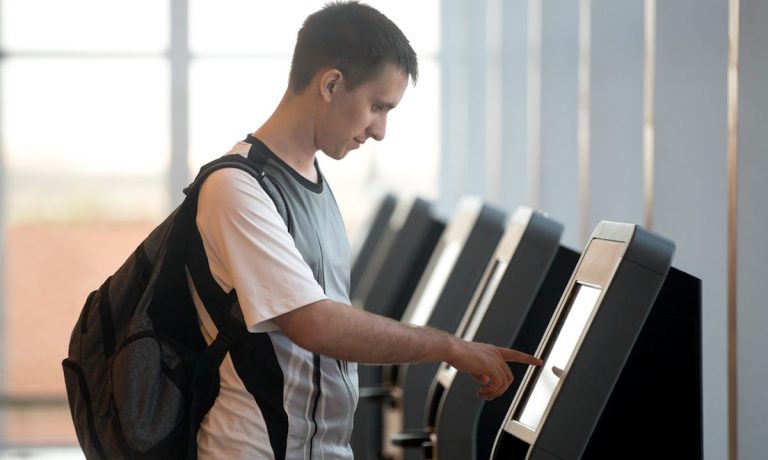As the restaurant industry’s labor shortage stretches out indefinitely into the future, consumer demand for restaurant meals remains elevated, with the rise of off-premise ordering presenting restaurants with the opportunity to meet consumers’ food needs both at home and away from home.
In an effort to fulfill this demand, the industry is turning toward automation. Robotic baristas are appearing in train stations, automated makelines are popping up in kitchens and self-operating smoothie kiosks are making their way into malls. These solutions present a way to meet consumers’ prepared food needs at any time, even in the face of these staffing challenges.
“I was at an airport yesterday, and there was a Starbucks, and then I walked 12 minutes and there was another Starbucks, and all of the other restaurants were closed, and this was at one in the afternoon,” Deglin Kenealy, founder and CEO of Automated Pizza Kitchen (APK) company Basil Street Pizza, told PYMNTS in an interview. “With our unit, you can get pizza 24 hours a day, seven days a week, so you don’t have some of the same challenges that restaurants are having right now getting labor.”
The company recently announced the forthcoming launch of its APKs at several major airports, including San Antonio International Airport, Chicago O’Hare International Airport and Cincinnati/North Kentucky International Airport, among others.
No Touching
Automated kiosks have the opportunity to meet consumers’ increasing expectations of contactless experiences.
Advertisement: Scroll to Continue
“We’re building toward future generations of units where a customer can order the pizza from their phone whenever they would like, and have it available for them in a warming drawer that’s prepared and holding their pizza,” said Kenealy.
Additionally, the company is working on integrating QR code payment capabilities into its system for people ordering on-site, allowing consumers to minimize their contact with the machine.
Contactless technologies can encourage a significant share of consumers to engage where otherwise they may not have. Research from PYMNTS’ report “The Bring-It-to-Me Economy,” created in collaboration with Carat from Fiserv – which surveyed more than 5,200 U.S. adults about how their shopping habits have changed since the start of the pandemic – found that a quarter of all consumers would be encouraged to shop at physical stores if those stores offered the ability to pay with digital wallets at contactless point-of-sale terminals, and 18% would be encouraged if the store offered the ability to check out using a QR code.
More details: Bring-It-to-Me Economy Ascends as Consumers Embrace Home-Centric Lifestyles
Notably, findings from PYMNTS’ 2021 Restaurant Readiness Index, a Paytronix collaboration, found that restaurant managers overestimate the importance of contactless technologies relative to consumers. Fourteen percent of consumers surveyed said they believe the ability to pay with QR codes will be important to restaurants’ future success, compared to 29% of managers. Similarly, 21% of consumers said the same of the ability to pay with digital wallets, compared to 34% of managers.
You may also like: QSRs’ Lagging Loyalty-Reward Investment Hurts Innovation and Sales
That being said, restaurants that offer contactless payment capabilities consistently perform better, with 28% of top-performing restaurants accepting QR code payments compared to just 12% of bottom performers, and with 82% of top performers accepting digital wallet payments, compared to just 31% of bottom performers.
Open or Closed
Kenealy noted that consumer behavior can vary dramatically depending on whether the kiosk is in what the company describes as an “open location,” such as an airport, where anyone can access the machine, or a “closed location,” a unit in a well-protected area that only authorized personnel can access.
Kenealy cited the example of the company’s two units serving “one of the world’s largest defense contractors” in Southern California. He noted that where open locations succeed when they provide the most widely liked items, closed locations, with their more limited customer base, are more successful when they offer variety.
“You may love pepperoni pizza, and you may get one or two of them a week for three, four, five weeks, but at some point, you just want something that’s a little different,” he said. “So, for example, one of the biggest sellers we’ve had in these types of environments is our breakfast pizza.”
The Vending Machine-Powered Future of Dining
While Kenealy predicts that the on-premise dining experience will remain a central part of the restaurant industry, he also believes that automated self-service, vending machine-style options will grow increasingly more popular for consumers looking for quick, convenient ways to get their food needs met.
Since the technology is still quite new, he said, “You need to build consumer confidence.” As consumers grow more comfortable engaging with robotic kiosks, however, he believes they will become a mainstay of the industry.
He predicted, “Ten years from now, I think we’ll be looking at a very different world that offers significant advantages in terms of efficiency, in terms of taking up less space and better customer experience, because there’s a consistency behind what is happening.”




